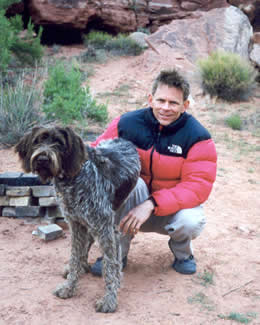2015 Research Catalyst Grantee

Michael Bunds
Utah Valley University
Project Title
Multi-disciplinary investigation of the timing and impact of major watershed-damming landslides in the central Wasatch: Little Cottonwood and City Creek Canyon case studies
Abstract
Mass wasting plays a crucial role in the development of mountain watersheds. In particular, large landslides that create landslide dams, like those in City Creek and Little Cottonwood Canyons, Utah, can impound large amounts of water, affect downstream water discharge and sediment load, and pose a major flood risk to areas above and below the dam. Landslide dams also create flood plains, alter channel morphology, and change stream gradients. Thus channel-damming landslides are hydrologically and geologically important processes on timescales relevant to society. However, little is known about the frequency or specific impacts of mass wasting on important watersheds in the Wasatch. We propose to conduct a multi- disciplinary study of two large drainage-damming landslide deposits in important watersheds of the central Wasatch, one in City Creek Canyon (Grandview Peak deposit) and one in Little Cottonwood Canyon (White Pine deposit). Each dammed the trunk streams in their respective drainages, leading to the formation of landslide-dammed floodplains behind the deposits. Based on their morphology and limited geochronology, both landslides are probably late Holocene and likely not older than ~3.5 ka. For each landslide, we will produce: 1) very high resolution morphological and surficial geology maps; 2) subsurface stratigraphic maps based on shallow refraction seismology and cores; and 3) we will date the formation of the deposits using cosmogenic exposure dating of the landslide debris and radiocarbon dating of sediments in the flood plains behind the debris dams. With this information we will estimate the number of Holocene events that formed each deposit, the maximum recurrence time interval for these events, likely trigger(s), the amount of sediment load added to the streams from erosion of the dams, and the evolution of the floodplains and debris dams subsequent to the formative events. All of these results will inform our understanding of medium and long term impacts of mass wasting on our vital mountain watersheds.
Collaborators
Nathan Toké, Utah Valley University
Suzanne Walther, Utah Valley University
Alessandro Zanazzi, Utah Valley University
Jeffrey Moore, The University of Utah
Mitchell Power, The University of Utah


